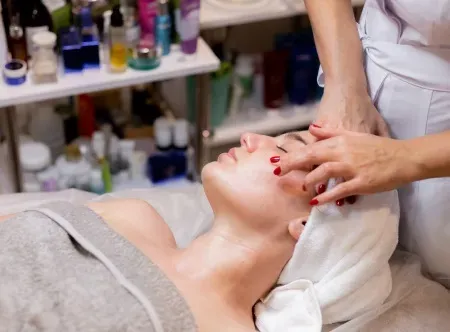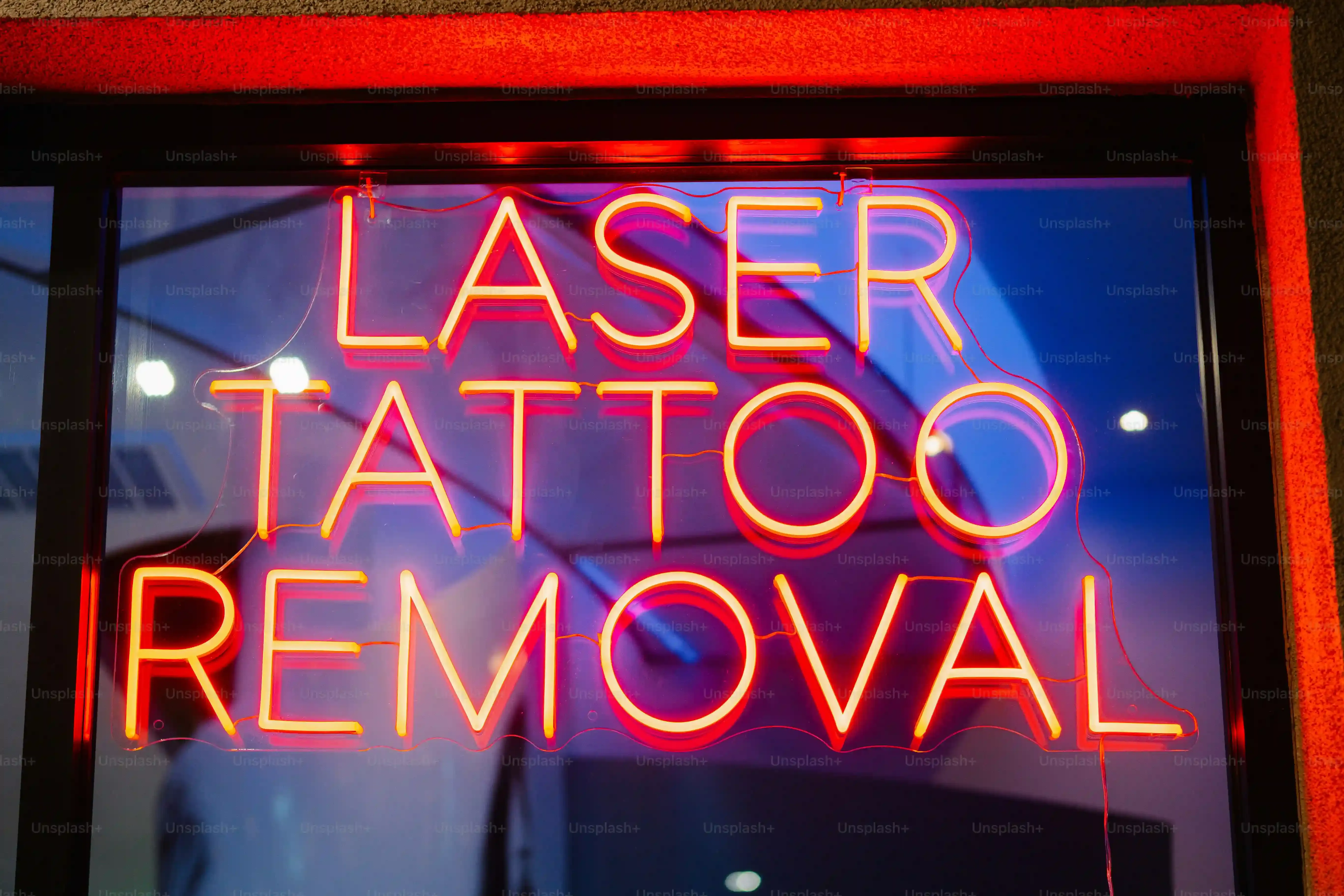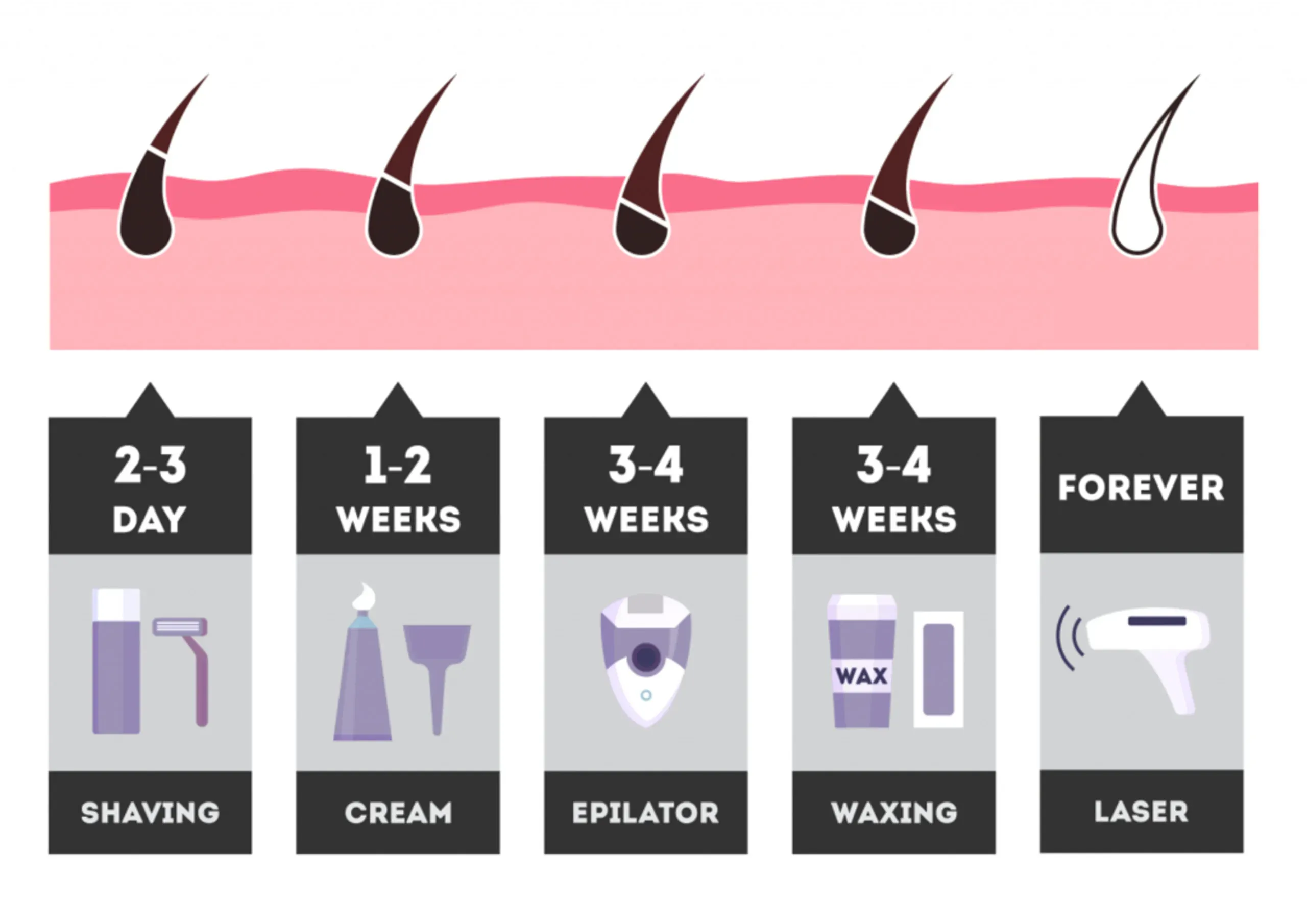Table of Contents
Tired of the endless cycle? Shaving nicks, waxing woes, and the constant battle against unwanted hair can feel like a full-time job. You've likely heard about laser hair removal as a potential escape, a path to smoother skin that lasts longer than your average razor blade or painful strip. But step into the world of lasers, and suddenly you're faced with acronyms and technical terms that make choosing the right treatment feel like navigating a science fair project gone wrong.
Different Lasers, Different Strokes: Understanding the Tech

Different Lasers, Different Strokes: Understanding the Tech
so you’re ready to ditch the razor and step into the future of smooth skin, but suddenly you hear terms like Alexandrite, Diode, and Nd:YAG. What is this, a secret agent convention? It turns out, not all lasers are created equal when it comes to blasting away unwanted hair. Each type operates at a different wavelength, and that wavelength determines who it works best for. Think of it like this: some lasers are great at spotting dark hairs on light skin, while others are designed to safely navigate deeper skin tones. Picking the right one isn't just about getting results; it's about doing it safely and effectively, avoiding potential issues like burns or discoloration.
Alexandrite and Diode: Often Considered the Best Type for Many

Alexandrite and Diode: Often Considered the Best Type for Many
When people talk about the **best type of laser hair removal**, especially for lighter skin tones and darker hair, the Alexandrite and Diode lasers often pop up. The Alexandrite laser operates at a shorter wavelength (755 nm), making it highly effective at targeting the melanin (pigment) in the hair follicle. This strong absorption of energy by the melanin means it's fantastic for zapping dark, coarse hairs. Think of it like a heat-seeking missile for pigment. It’s generally pretty fast, which is great for larger areas like legs or backs. However, because it's so attracted to pigment, it carries a higher risk of affecting the surrounding skin pigment on darker skin tones, which is why it's usually reserved for Fitzpatrick skin types I-III.
The Diode laser operates at a slightly longer wavelength (810 nm) compared to the Alexandrite. This allows it to penetrate deeper into the skin, targeting the hair follicle more directly while potentially being a bit safer for slightly darker skin tones (Fitzpatrick types I-IV). It's often described as being versatile and effective for a range of hair types and colors, though it still performs best on darker hair. Some people find the Diode laser treatments a little less uncomfortable than Alexandrite, but that really varies from person to person and the specific machine used. Many clinics, like hairawaybylaser.com, utilize these types because of their proven track record and effectiveness on a wide patient base.
So, how do these two stack up head-to-head?
Laser Type | Wavelength | Best Suited For | Notes |
|---|---|---|---|
Alexandrite | 755 nm | Lighter skin (Types I-III), Dark hair | Fast treatment, high melanin absorption |
Diode | 810 nm | Lighter to medium skin (Types I-IV), Darker hair | Deeper penetration, versatile |
Nd:YAG: The Best Type of Laser Hair Removal for Deeper Skin Tones

Nd:YAG: The Best Type of Laser Hair Removal for Deeper Skin Tones
Why Wavelength Matters for Darker Skin
so we talked about Alexandrite and Diode being solid choices, but what if your skin has more pigment? This is where the Nd:YAG laser steps onto the stage. Operating at a much longer wavelength (1064 nm), this laser is the heavyweight when it comes to safely treating Fitzpatrick skin types IV, V, and VI. Why does the longer wavelength matter? It penetrates deeper into the skin, past the upper layers where most of the melanin resides. This means the laser energy is less absorbed by the skin itself and more directly targets the melanin in the hair follicle at a lower, safer concentration for the skin's surface. It's like sending a precision strike to the target without causing collateral damage to the surrounding area. Without this technology, effective and safe laser hair removal for darker skin tones was practically impossible, leading to burns and hyperpigmentation.
Safety and Effectiveness for Richer Skin Tones
Before the widespread use of Nd:YAG, laser hair removal for individuals with brown or black skin was risky business. Many clinics would just say "no" or use less effective methods that could cause serious side effects. The Nd:YAG changed that. Its ability to bypass epidermal melanin significantly reduces the risk of complications like blistering, scarring, or permanent pigment changes. While it might require a few more sessions compared to treating dark hair on very light skin with an Alexandrite, the results can be life-changing for those who previously had limited options. It targets the hair follicle's blood supply as well as the melanin, adding another layer of effectiveness.
Think about the frustration of someone with beautiful, rich skin who just wanted smooth legs but was told it was too dangerous. The Nd:YAG laser opened up this treatment to a much wider population, offering a safe path to permanent hair reduction. It's not a magic wand, and it still requires a skilled technician and proper settings, but it is undeniably the gold standard for darker skin types.
- What are the main risks of using the wrong laser on darker skin?
- How does the Nd:YAG wavelength minimize these risks?
- Can Nd:YAG treat all hair colors on darker skin? (Spoiler: Still needs pigment!)
What to Expect from Nd:YAG Treatment
Treatments with the Nd:YAG laser feel similar to other laser types – often described as a rubber band snapping against the skin. Discomfort levels vary depending on the area being treated and your personal pain tolerance. Cooling systems are usually employed to make it more comfortable. Because the laser targets the hair follicle, you'll need multiple sessions, typically spaced 4-8 weeks apart, to catch hair in its active growth phase. The number of sessions varies based on hair density, thickness, and the treatment area, but a series of 6-10 sessions is pretty standard. While shedding of treated hairs happens in the days and weeks following treatment, the long-term reduction is what you're paying for. It's a process, not a one-time fix, but for many with deeper skin tones, the Nd:YAG offers the only truly effective and safe laser option.
How to Determine the Best Type of Laser Hair Removal for You

How to Determine the Best Type of Laser Hair Removal for You
so you've got the rundown on the different laser types – the Alexandrite, the Diode, and the Nd:YAG. Now comes the crucial part: figuring out which one is the **best type of laser hair removal** *for you*. This isn't a one-size-fits-all situation, and choosing correctly is the difference between amazing results and a frustrating, possibly painful, experience. The most significant factors in this decision are your skin tone and hair color. Laser hair removal works by targeting the pigment (melanin) in the hair follicle. The more contrast between your hair color and skin color, the easier it is for the laser to hit the target without affecting the surrounding skin. This is why people with fair skin and dark hair are often considered ideal candidates and see fantastic results relatively quickly.
But what if you don't fit that exact description? That's where the different laser wavelengths become critical. If you have darker skin, using a laser designed for lighter skin can be risky. Conversely, using a laser with a longer wavelength on very light skin might be less effective because there's less melanin in the hair for that wavelength to target efficiently. It’s like trying to use a wide-beam flashlight to pinpoint a tiny object in the dark – you’ll get some light on it, but it’s not as focused or effective as a narrow beam.
Here's a quick guide based on the Fitzpatrick Skin Type Scale, which is commonly used to classify skin's reaction to sun exposure and, importantly, laser treatments:
Fitzpatrick Skin Type | Description | Generally Recommended Laser Type(s) |
|---|---|---|
Type I | Very fair skin, always burns, never tans | Alexandrite, Diode |
Type II | Fair skin, usually burns, tans minimally | Alexandrite, Diode |
Type III | Medium skin, sometimes burns, tans gradually | Alexandrite, Diode, Nd:YAG (with caution) |
Type IV | Olive skin, rarely burns, tans easily | Diode, Nd:YAG |
Type V | Brown skin, very rarely burns, tans very easily | Nd:YAG |
Type VI | Dark brown/black skin, never burns, deeply pigmented | Nd:YAG |
Beyond skin tone and hair color, other factors come into play. Hormonal conditions can influence hair growth, potentially requiring more maintenance sessions. Certain medications can also affect your skin's sensitivity to light. Your personal pain tolerance is another consideration, though modern machines often have excellent cooling systems to minimize discomfort. The area you want treated matters too – some areas are more sensitive than others, and the hair density varies.
Honestly, the absolute best way to determine the **best type of laser hair removal** for *your* specific needs is to get a professional consultation. A qualified technician or dermatologist will assess your skin type, hair characteristics, and medical history. They can perform a patch test to see how your skin reacts to a particular laser before committing to a full session. This step is non-negotiable. Don't trust a place that promises results without properly evaluating you first. It's your skin, after all, and you want to treat it right.
- Assess your skin tone and hair color honestly (or better yet, get a professional opinion).
- Research clinics and the types of lasers they use.
- Always, always get a consultation and patch test.
- Ask about the technician's experience with your skin type.
- Discuss your medical history and any medications you take.
Beyond the Best Type: What Else Matters for Great Results

Beyond the Best Type: What Else Matters for Great Results
The Person Pulling the Trigger Matters
so you've got the lowdown on the laser types – you know your Alexandrite from your Nd:YAG. But here’s the cold, hard truth: the fancy machine is only as good as the person operating it. Think of it like a high-performance sports car; in the wrong hands, it's just a really expensive way to crash. A skilled, experienced technician knows how to properly assess your specific skin and hair, select the right settings on the machine (which is way more nuanced than just picking a number), and understand how your skin is reacting during the treatment. They know when to adjust, when to pause, and what potential issues to watch out for. Going to a place that offers rock-bottom prices but hires inadequately trained staff is a gamble you probably don't want to take with your skin. You're paying for their expertise and judgment just as much as the laser pulses.
Your Homework: Pre- and Post-Treatment Care
Getting the **best type of laser hair removal** isn't just about showing up for your appointment. What you do before and after each session significantly impacts your results and safety. Ignoring the rules is a surefire way to end up with less-than-ideal outcomes, like burns, hyperpigmentation, or simply ineffective treatments. The most critical rule? Stay out of the sun. Tanned skin has more melanin, making it a higher risk for laser complications, regardless of the laser type. You also need to avoid waxing or plucking hair in the weeks leading up to your session because the laser needs the hair follicle intact to work. Shaving is fine, even necessary, right before treatment. Afterward, your skin will be sensitive. Avoid hot showers, saunas, intense exercise, and harsh products for a day or two. Treat your skin gently, like you would a mild sunburn.
- Avoid sun exposure and tanning beds for at least 2-4 weeks before and after treatment.
- Do not wax, pluck, or use depilatory creams in the treatment area for 4-6 weeks prior. Shave the area thoroughly the day before or morning of your appointment.
- Avoid perfumes, deodorants (if treating underarms), or lotions on the treatment area the day of your session.
- Use a gentle cleanser and moisturizer after treatment.
- Apply SPF religiously to the treated area, especially if exposed to the sun.
- Avoid hot baths, saunas, and strenuous exercise for 24-48 hours post-treatment.
Patience is a Virtue (and Necessary for Results)
Nobody gets permanent hair reduction after one laser session. If someone tells you that, they’re selling snake oil. Hair grows in cycles, and the laser is most effective on hairs in the active growth (anagen) phase. At any given time, only a percentage of your hair is in this phase. That’s why you need multiple sessions, typically spaced several weeks apart, to catch the hairs as they cycle through. It takes time and consistency. Don't get discouraged if you still see growth between appointments; that's completely normal. You’ll notice shedding in the days following treatment, and over time, the hair will become sparser, finer, and lighter. Full results usually require a series of 6-10 sessions, sometimes more depending on the area, hair type, and individual response. Think of it as a commitment, not a quick fix. Maintenance sessions might be needed down the line, maybe once a year or so, to zap any stragglers that decide to pop up. It’s about significant, long-term reduction, freeing you from the daily grind, even if a rogue hair occasionally tries to make a comeback.
Finding Your Laser Match: Not One-Size-Fits-All
Ultimately, the "best type of laser hair removal" isn't a single machine sitting in a clinic corner. It’s the specific technology that aligns with your individual skin tone, hair color, and treatment goals. While Alexandrite and Diode lasers often shine for many, the Nd:YAG is crucial for those with deeper skin tones. Trying to apply a universal solution to diverse human biology rarely works. Getting a consultation with a qualified professional isn't just a suggestion; it's a necessary step to ensure safety and effectiveness. They can assess your specific characteristics and recommend the laser type most likely to deliver the results you're seeking, avoiding unnecessary sessions or potential complications.
